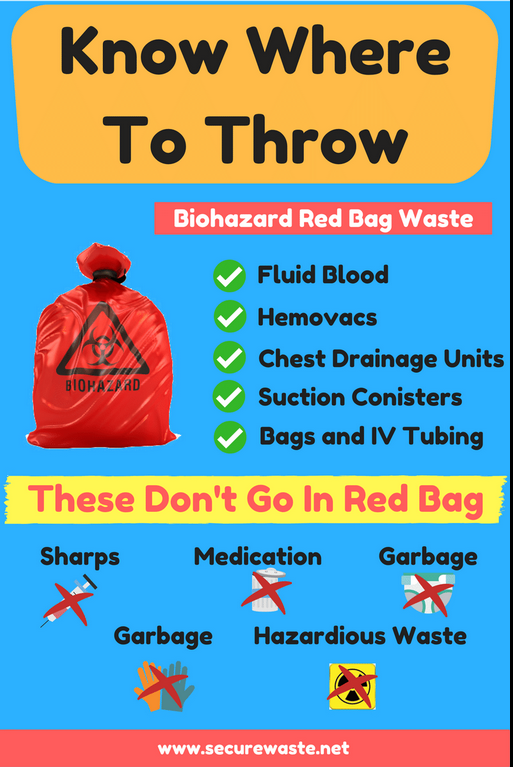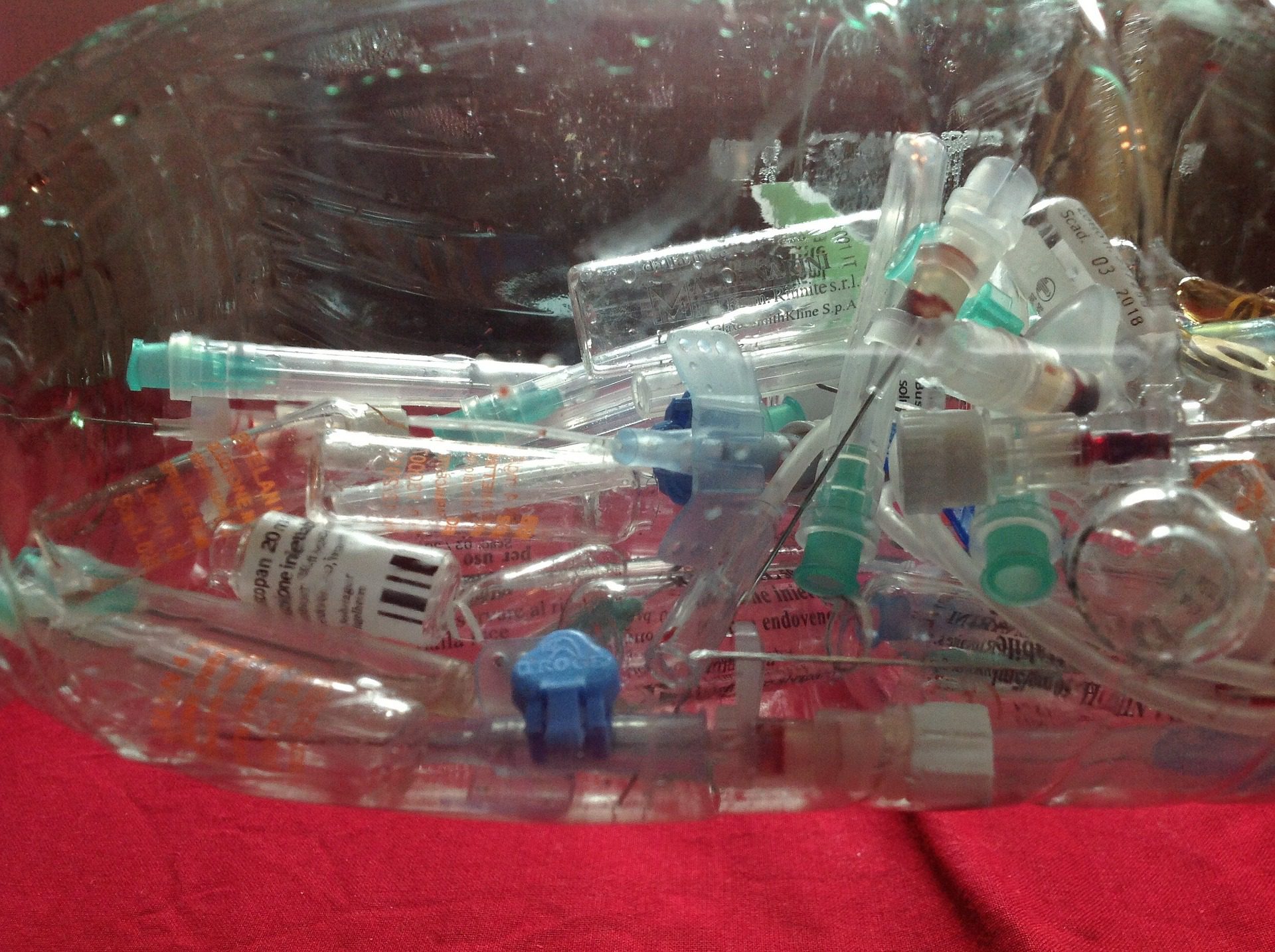Security First: Your Overview to Responsible Medical Waste Removal Services
Minimize Costs and Take Full Advantage Of Security: Effective Medical Garbage Disposal Methods
Effective medical waste disposal methods are crucial for healthcare centers to minimize prices and maximize safety and security. By carrying out appropriate segregation and categorization, effective packaging and labeling, secure transportation and handling, efficient therapy and disposal methods, and compliance with regulatory guidelines, health care centers can guarantee the accountable and risk-free management of medical waste.

Appropriate Segregation and Classification
Appropriate segregation and categorization are vital components of efficient medical waste disposal approaches, ensuring the safety and security of healthcare employees, the public, and the environment - medical waste removal services. medical waste disposal services with WasteX. By separating various kinds of medical waste at the point of generation, health care facilities can decrease the danger of cross-contamination and possible injury to people and communities
One of the key aspects in correct segregation is the identification and category of clinical waste. This includes classifying waste into different groups, such as contagious, harmful, contaminated, or pharmaceutical waste. Each group needs certain handling, storage, and disposal approaches to avoid any damaging results on human wellness and the environment.
In addition, correct segregation additionally includes making use of color-coded tags and containers to plainly identify and set apart the different types of clinical waste. This aids healthcare employees and waste management workers to conveniently acknowledge and deal with the waste appropriately. Red containers may be used for transmittable waste, while yellow containers might be marked for hazardous waste.
In enhancement to segregation, correct categorization additionally includes the correct packaging and containment of medical waste. This guarantees that waste is firmly kept and transported without positioning any type of dangers to people or the setting. Using puncture-resistant and leak-proof containers, as well as appropriately sealing and identifying them, helps to prevent any kind of accidental direct exposure or release of harmful compounds.
Reliable Product Packaging and Labeling
Effective product packaging and labeling play a crucial duty in making certain the secure and reliable disposal of clinical waste. Appropriate product packaging is important to avoid leak, breakage, or spillage during transport and handling. It assists to decrease the threat of contamination and protects healthcare employees, waste management employees, and the environment from prospective threats.
Clinical waste should be packaged in watertight and strong containers that are immune to penetrate and damage. These containers ought to be effectively secured to avoid any type of leak. Additionally, the packaging must be able to stand up to the problems of transportation, consisting of temperature level variants and misuse.
Classifying is similarly important as it supplies vital details about the components of the waste and any type of possible risks connected with it. The labels need to consist of the name of the medical care facility, the kind of waste, and any unique handling instructions. Clear and standard labeling makes sure that waste administration employees can easily identify and deal with the waste properly.
Reliable product packaging and labeling likewise help in the correct segregation and categorization of medical waste. Clear labeling permits for simple identification of various waste streams, such as contagious waste, sharps, or pharmaceutical waste. This assists in enhancing the disposal procedure and making sure that the waste is treated or disposed of in conformity with regulatory standards.
Safe Transportation and Handling
Making sure the secure transportation and handling of medical waste is of utmost importance in order to stop any potential wellness and environmental risks. Medical waste, such as sharps, infected materials, and pharmaceutical waste, should be appropriately packaged and managed to lessen the risk of exposure to unsafe materials and microorganisms.
Moving clinical waste requires compliance with strict regulations and standards established by regional authorities and environmental agencies. These laws aim to safeguard the health and wellness of workers associated with waste administration and avoid the release of hazardous materials into the atmosphere.
To make certain risk-free transport, medical waste must be put in puncture-resistant and leak-proof containers that are effectively sealed and labeled. These containers ought to be secured in such a way that avoids spills or breakage throughout transportation (medical waste removal services). great post to read Furthermore, it is vital to use customized automobiles furnished with suitable safety functions to carry clinical waste. These lorries ought to have ample ventilation and be developed to avoid leakage or contamination.
Managing medical waste additionally requires proper training and adherence to safety and security methods. Employees included in the handling of clinical waste need to wear ideal personal safety equipment (PPE) such as dress, gloves, and masks to reduce the threat of exposure. They should also comply with strict hygiene techniques to avoid the spread of infections and guarantee the safe disposal of waste.
Efficient Therapy and Disposal Methods
Implementing appropriate treatment and disposal techniques is important in taking care of medical waste efficiently and reducing possible health and wellness and environmental risks. Medical waste, which consists of sharps, infectious products, chemicals, and drugs, can present significant risks otherwise taken care of and gotten rid of effectively. There are several therapy and disposal methods readily available that stick to regulative standards and advertise safe methods.
One common method is incineration, which includes melting the waste at high temperatures. Incineration works in damaging virus and decreasing the quantity of waste, but it can release hazardous contaminants right into the air if not appropriately managed. Therefore, it is very important to utilize modern burners equipped with exhaust control innovations.
One more approach is autoclaving, which uses vapor and pressure to sterilize the waste. Autoclaving is effective in killing microorganisms and minimizing the quantity of waste, but it needs cautious surveillance and upkeep to ensure correct performance. The disinfected waste can then be securely taken care of in a garbage dump.
Chemical therapy is another choice, which entails using disinfectants or various other chemicals to counteract virus. This technique is generally used for fluid waste, such as laboratory specimens. It is important to make use of proper chemicals and follow correct treatments to ensure reliable treatment and avoid ecological contamination.

Conformity With Regulatory Guidelines
Complying with regulative standards is necessary in ensuring correct compliance with clinical waste disposal practices. These standards are implemented to secure public health and wellness, avoid environmental contamination, and preserve office safety. Conformity with regulative guidelines is crucial for health care centers, as non-compliance can lead to fines, penalties, and reputational damages.
Governing standards outline the correct handling, storage, transport, and disposal of medical waste. They offer specific guidelines on look what i found packaging needs, labeling, and record-keeping. These standards additionally deal with the partition of different waste streams, such as sharps, infectious waste, and pharmaceutical waste. Health care facilities have to make certain that their waste management methods straighten with these standards to lessen the danger of direct exposure to dangerous materials and protect against the spread of infections.
To maintain conformity, medical care facilities must establish extensive waste administration programs that include staff training, regular audits, and recurring surveillance. It is vital to keep up-to-date with any modifications or updates to regulatory guidelines, as methods might evolve in time. By staying educated and executing appropriate protocols, medical care centers can decrease the potential for governing infractions and protect the health and safety and security of their team, clients, and the surrounding community.
Conclusion
Finally, executing efficient medical waste disposal strategies is critical for decreasing costs and making the medical waste disposal services with WasteX most of safety. Proper segregation and categorization, efficient product packaging and labeling, safe transport and handling, and effective treatment and disposal methods are necessary actions to make sure compliance with governing guidelines. medical waste removal service. By sticking to these approaches, health care centers can protect the atmosphere and public health while also minimizing economic problems connected with clinical waste monitoring
By carrying out appropriate partition and classification, reliable product packaging and labeling, secure transport and handling, efficient treatment and disposal methods, and compliance with regulative standards, health care facilities can make sure the liable and safe management of medical waste. Red containers might be made use of for contagious waste, while yellow containers might be designated for hazardous waste.
Clear and standard labeling makes sure that waste management employees can conveniently determine and handle the waste properly. (medical waste disposal services with WasteX)
Clear labeling permits for simple identification of various waste streams, such as transmittable waste, sharps, or pharmaceutical waste. These guidelines additionally address the partition of different waste streams, such as sharps, infectious waste, and pharmaceutical waste.